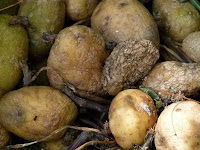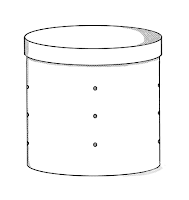Long, long ago
In a garden far, far away,
There was a master composter
...
 |
Image by Francis Ray from Pixabay |
Ok, no. There was only me. But I was composting, so that counts...right?
Roughly 10 years ago, I created my own DIY composter. It worked pretty well, and I produced some killer compost.
It smelled like gardening heaven...or at least high-quality potting soil. And it saved money on the next season's garden since I had no worries about buying soil or even fertilizer.
We're at the end of another growing season, so I'm beginning again. This time, though, I'm not building my own composter. The reason for the change is that my original composter was too small. I needed something much larger.
Unfortunately, good composters can cost some serious money. At least, that's how it feels if you're out of work due to a pandemic. In this case, you have 2 options: find an incredibly cheap one, or make your own.
Building Your Own Composter
If you choose to build your own, find a design that's easy to turn. A barrel, a paint bucket, or some other rounded container can be rolled, whereas different shapes require you to expend more energy and use additional tools.
A rounded structure not only makes mixing the compost easy but also fun! I used to roll my compost bucket around the yard. It didn't need that much turning, of course. It was just an amusing way to enjoy the time spent.
Also, make sure you incorporate holes for air. Oxidation is a must in any compost bin, which means you need good airflow.If you don't care much about the aesthetics of your composter, a simple 5-gallon paint bucket and lid do the job in a pinch. That's how I created my first composter.
Drill some holes in the 12:00, 3:00, 6:00, and 9:00 positions, about 3-4 inches from the bottom, and then drill additional holes vertically every 3 inches. Your mini-composter is now ready to be filled.
Buying a Compost Bin
Otherwise known as the lazy--and expensive--way.
Also known as the way I'm doing it this time.
I don't usually recommend or use this method, but a) I live in an apartment, so the composter can't take up much space, and b) I need something larger than a 5-gallon container.
Buying one is pricey, especially during a pandemic. I was fortunate, though; I got my new 18.5-gallon composter, priced at under $100, as a gift. It allows me to turn the compost easily, thanks to its hexagonal design.Further, it's not ugly (which keeps the property management happy), it's sturdy, and it's one of the least expensive bins out there.
If you choose to purchase your composter and live in an apartment like I do, please be sure to use a blanket or tray to catch any water or dirt that leaks through the holes. This will save you from damaging anything...or dropping unwanted mess onto your downstairs neighbor's head!
Once you've chosen your compost bin, there are a few basics that you need to know to produce good compost.
You need to begin with a good blend of materials.
There are 3 material types to use:
Brown: These are items like your dried leaves, paper, and biodegradable egg cartons. The key here is that even though these items are organic, like the green matter, they are dry. They help ensure you don't have a wet mess stinking up your area.
Green: This is the somewhat fresh-ish plant waste, like fruits, vegetables, and wilted garden plants. Do not add meat to this mixture. It doesn't work well. Throw that in the trash or into the city compost bin if you have one.
Dirt: Just plain old dirt. It can be last season's garden soil, sand, or silt. It doesn't matter, as long as it's dirt. Don't worry about the presence or lack of nutrients; you're producing your own in the bin.
Pay attention to your ratios!
The optimal ratio of these 3 components is 1-2-1. Basically, you want 25% of the blend to be brown matter, 50% to be green matter, and the last 25% to be dirt. The closer you get to these specific amounts, the better off your results will be.
Water is your best friend...or your worst enemy.
Pay close attention to your moisture levels. Too little water causes your materials to compost more slowly. Too much moisture, however, will contribute to rot, which is disgusting.
 |
| Image by Steve Theaker from Pixabay |
And stressful.
If you ever feel that you need extra water in your mix, err on the side of caution and use a hand mister, but spray only once into the mixture. Wait a few days, and spray again if you're still not satisfied. Trust me on this. Going overboard is the worst thing you could possibly do.
This, in a nutshell, is all you need to know to compost like a boss.
If you really want to get things moving, then you can use a few additional tricks. Simply head over to my compost party post for some tips, along with more in-depth explanations about the process.





No comments:
Post a Comment